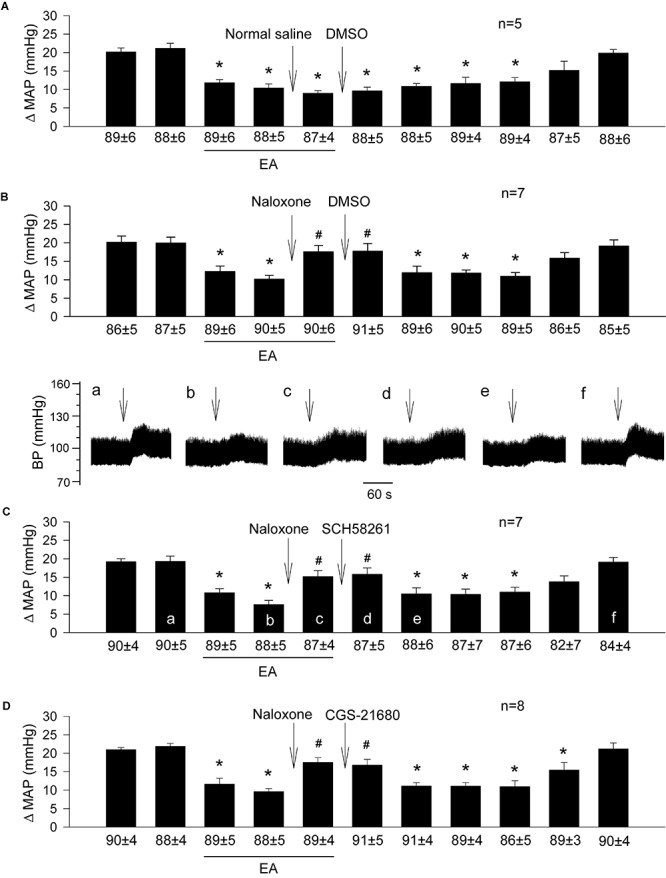FIGURE 4.

Importance of opioids in adenosine-mediated EA inhibition of GD-induced pressor reflexes through A2a receptors in the rVLM. Bars represent increases in mean arterial blood pressure (MAP) following GD. Values below each bar indicate the baseline MAP (means ± SE) before GD. (A) Sequential microinjections of normal saline and 5% DMSO (both 50 nl) into the rVLM, which are vehicles for naloxone (a non-selective opioid receptor antagonist) and SCH 58261 & CGS-21680 (an A2a receptor antagonist and agonist, correspondingly), respectively; (B–D) following microinjection of naloxone (1 mM in 50 nl) into the rVLM with EA treatment, 5% DMSO (the vehicle; B), SCH 58261 (1 mM in 50 nl; C) or CGS-21680 (0.4 mM in 50 nl; D) were administered into the same site of the rVLM. ∗P < 0.05, a decrease of GD response after the onset of EA; #P < 0.05, after vs. before microinjection of naloxone into the rVLM. Labels a–f in (C) indicate examples of the original BP tracings of a rat from this group; ↓, time of GD application. Blockade or activation of A2a receptors did not alter EA’s action in attenuating GD-evoked sympathoexcitatory cardiovascular reflexes after inhibition of opioid receptors in the rVLM. These data suggest that the involvement of rVLM adenosine A2a receptors in EA modulation of GD-induced pressor reflexes is dependent on the presence of opioids.
